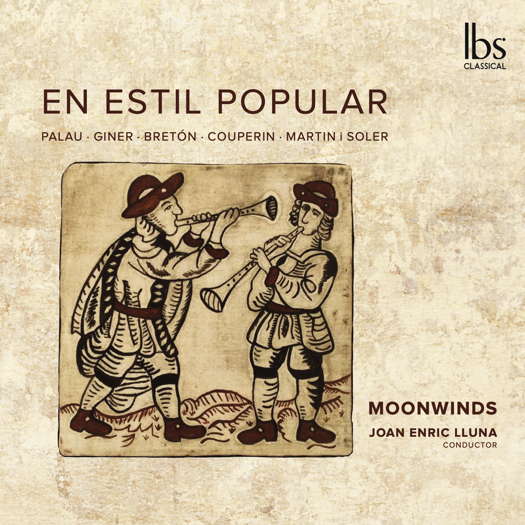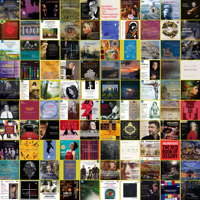 DISCUSSION: John Dante Prevedini leads a discussion about Composers, individuals or collective?, including contributions from David Arditti, Halida Dinova, Robert McCarney and Jane Stanley.
DISCUSSION: John Dante Prevedini leads a discussion about Composers, individuals or collective?, including contributions from David Arditti, Halida Dinova, Robert McCarney and Jane Stanley.

Plenty of Spanish Sunshine
Spanish music of a bygone era, reviewed by PAUL SARCICH
'... poised playing and excellent interweaving of the various wind sounds.'
The 'Harmonie' is the eighteenth century wind ensemble which did so much to popularise music in the centuries before recording. There is a letter from Mozart to his father complaining that he had to stay up all night arranging the arias from his new opera Don Giovanni for wind band, or someone else would do it first and get the money. The Harmonie was a business then, especially in the propagation of operatic music.
It is here put to the service of Valencian composers, the idea of Valencian clarinettist Joan Enric Lluna who heads the Moonwinds ensemble. The pairs of oboes, clarinets, horns and bassoons are sometimes augmented by flute, cor anglais and double bass, in arrangements mostly written for this group. Lluna's idea is both to expand the repertoire of the Harmonie and show off Valencian composers and arrangers at the same time. He achieves both, with the aid of a first-rate ensemble of musicians who hold positions in major Spanish orchestras and some elsewhere in Europe. And let's not forget the arrangers, always the invisible force behind projects like this.
A 1927 String Quartet in estil popular by Manuel Palau Boix (1893-1967) - mysteriously called just 'Han' on the track listing in the booklet - has been rendered into a Suite for winds by Daniel Blanco. Palau set out to do for Valenican folk music basically what de Falla had done for Andalusian: raise it to the level of an art music, which is a trickier proposition than it sounds, given the self-containedness of folk music.
The opening allegro movement is notable for the construction of some of the backings, the treatments and textures being well mixed throughout the tunes. A triple time scherzo follows, cheerful, colourful and dancey, alternating with slower sections: still dancey, but stately. A slow movement provides some attractive melodies, set well. In the finale Palau shows off his composerly credentials, including fugato. Throughout the suite he employs the full range of weaponary for treating the tunes, and Blanco follows suit with his exploitation of wind sounds.
Listen — Manuel Palau Boix / Daniel Blanco: Final (Suite en estil popular)
(IBS152022 track 4, 0:01-0:57) ℗ 2022 IBS Artist :
Listening in the 21st century, these pieces sound quite mellow with added moments of astringency, rather reminiscent of some of the early twentieth century French composers' treatments of their folk music. Certainly it is difficult to go along with the booklet's assertion that Palau 'succeeds in bringing the Valencian musical tradition to the cutting edge of modernity', considering say, what Bartók had done with Hungarian folk music by the late twenties; but the Suite is ear-catching thanks to the multiplicity of sounds available from the wind instruments and the nature of the tunes themselves.
Blanco is also responsible for the arrangement of Salvador Giner Vidal's Capricho instrumental, a youthful and tuneful work, which could easily be taken for operatic excerpts from a nineteenth century lyric opera, especially given that quite a bit of it sounds more Italian or French than Spanish.
Listen — Salvador Giner Vidal / Daniel Blanco: Capricho instrumental
(IBS152022 track 5, 3:09-3:58) ℗ 2022 IBS Artist :
We are in opera, or at least zarzuela, territory with Tomás Bréton's Fantasía sobre La verbena de la Paloma, the sort of thing theatre composers had to write in those days to get their music out into cafés, concert halls, or just the streets. Miquel Ortega has not just strung together a medly of tunes, but grown Bréton's material into a four movement suite.
A skippy first movement, very Spanish flavoured but containing a slower central cantilena section - lovely horn melody here! - gives us plenty of Spanish sunshine.
Listen — Tomás Bréton: Allegro animato
(Fantasía sobre La verbena de la Paloma)
(IBS152022 track 6, 1:12-1:58) ℗ 2022 IBS Artist :
A more stately second movement, with, as in the first, lots of solos from all instruments, making this both playful and charming as befits operetta. Thirdly a waltz with a surprise ending, and a finale which takes us back to the Spanishry of the first movement – plenty of familiar Spanish rhythms, harmonic shifts and melodic shapes.
Ortega wisely lets the original music speak without playing tricks or trying to over-modernise it. He has in fact done more than a mere arranging job, expanding and elaborating Bréton's themes to make an ear-catching suite: easy to listen to and consistently charming.
César Cano has arranged the only non-Spanish music on the disc, three pieces from Couperin's Book IV of harpsichord pieces, although there are in fact two treatments of La Bondissante. They feature poised playing and excellent interweaving of the various wind sounds.
Finally we are into the world of eighteenth century opera itself, with Vicente Martin i Soler's (not to be confused with Antonio 'Padre' Soler of Barcelona) opera Un cosa rara, using the contemporaneous arrangement by Johan Wendt. It is everything one expects of such pieces, but underpinned by Valencian folk music.
Listen — Vicente Martin i Soler / Johan Wendt: Un cosa rara
(IBS152022 track 13, 5:41-6:30) ℗ 2022 IBS Artist :
Like most of the music on the disc, it comes across as locally-flavoured takes on established eighteenth and nineteenth century models. It could hardly be any other way, so what we have is a collection of music that is very easy to listen to, but not without its own charm and regional colour. The playing itself is characterised by close attention to dynamic balance between the parts, essential in an ensemble which, unlike a string or brass group, consists of such heterogeneous instruments; and the recording is clean and clear. The booklet notes are in Spanish, English and Valencià. An excellent acquisition for fans of the Harmonie or Spanish music of a bygone era.
Copyright © 7 March 2023
Paul Sarcich,
Sheffield, UK





